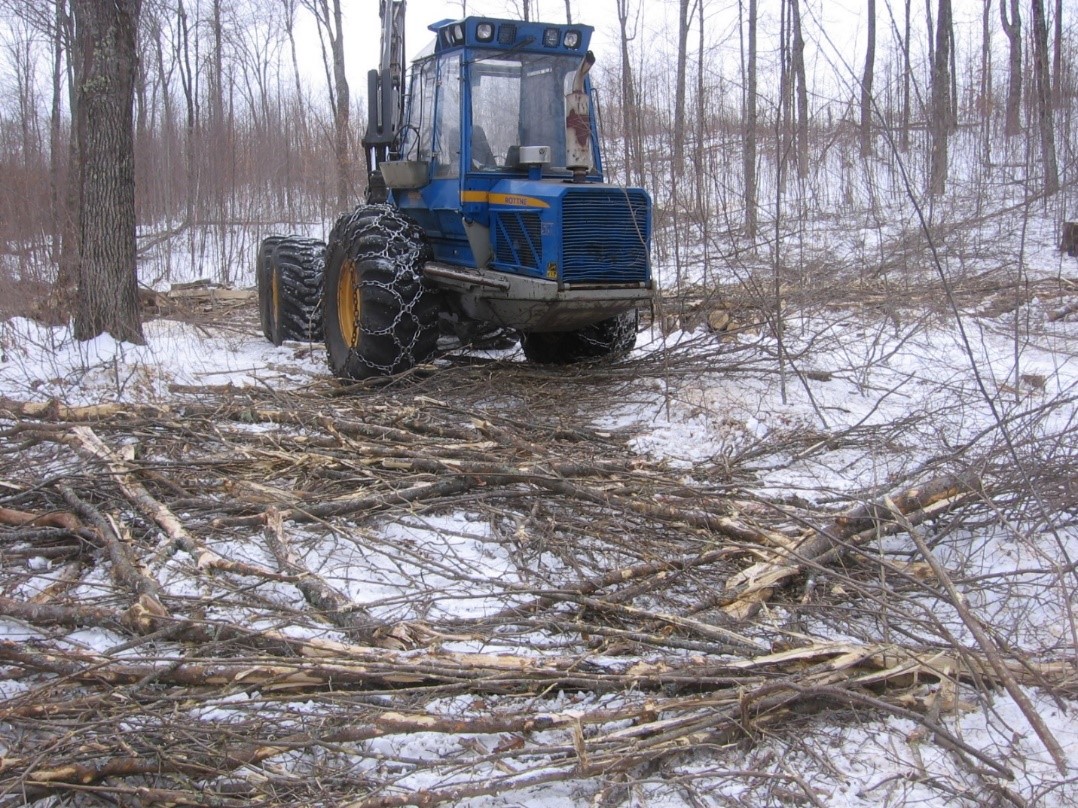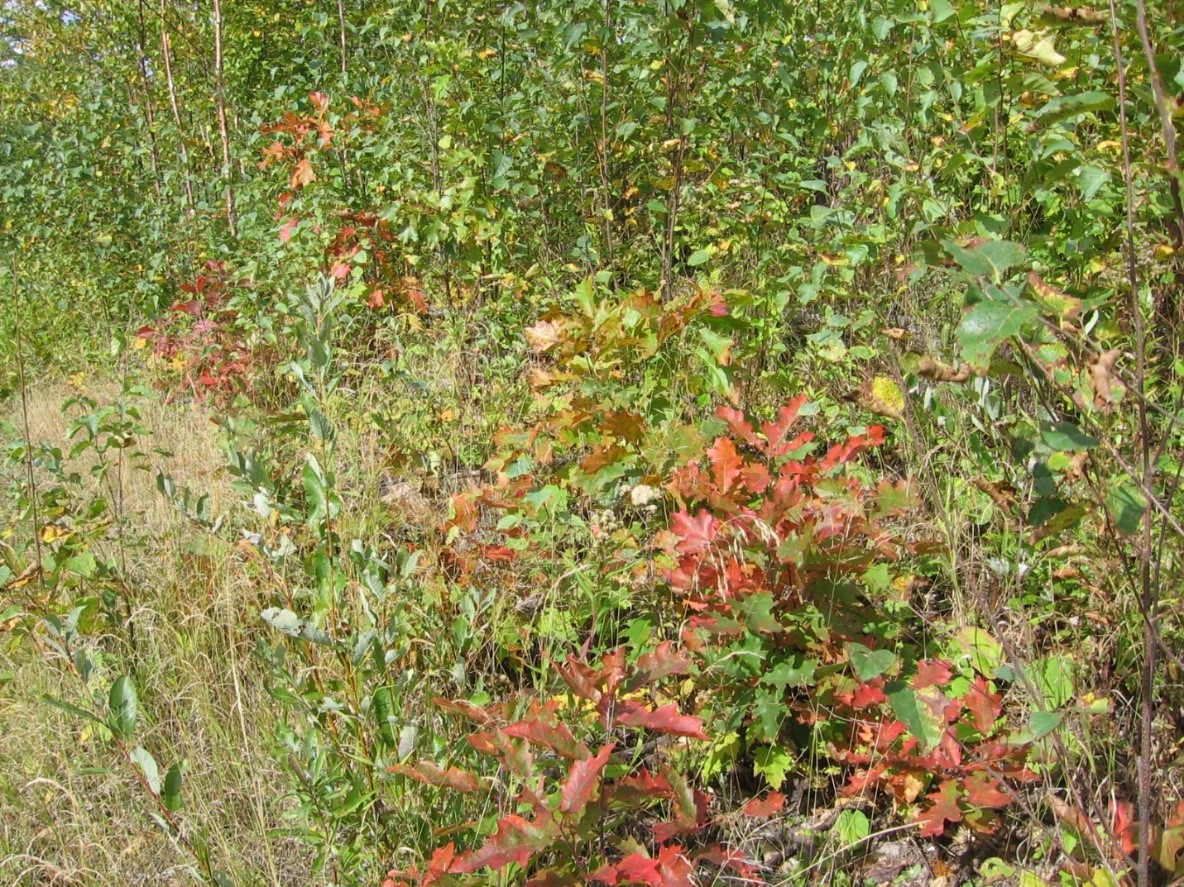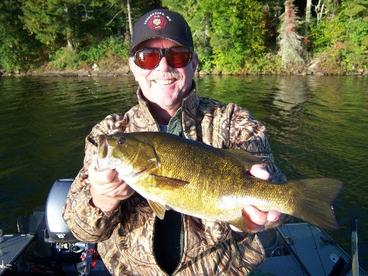Overview
At the beginning of this two-entry shelterwood treatment the stand was comprised of 83-year-old northern hardwoods. That was in 2002 when the first entry was set up by my predecessors, with a goal of reducing the basal area to 60 ft². That harvest was done in summer/fall conditions by a conventional operator, so there was some soil scarification. In 2011, the stand was 92 years old when preparation was done for the second entry, and it was purchased by a cut-to-length operator. This overstory removal was completed in 2017 and 2018 during frozen ground conditions to protect the established regeneration, which was then up to fifteen years old.
Ideally, we would have scarified the site with a Salmon Blade pre-harvest and done the overstory removal at year ten. Even without ideal site preparation it seems this harvest was fairly successful, although for some reason the oak seedling numbers went down after the second entry.
Silviculture Objectives
The primary goal of this harvest was to perpetuate the Northern Hardwood type, and the red oak in particular. We hope for improved form, quality, and volume of hardwoods, and to maintain species diversity in an area where stands have often been converted to an aspen type.
Pre-treatment stand description and condition
Stand establishment and management history
This stand originated from the 1918 Cloquet Fire on an esker surrounded by cedar and spruce swamps. It was passed over for many years because it didn’t hold any quantities of aspen for the pulp market, nor pine for timber. The hardwoods are not currently of a high quality, and here on the edge of their range there aren’t many markets for them. Interestingly, the Original Survey Notes from 1872 described pines up to 36 inches in diameter, along with birch, maple, basswood, and fir. I found no conifers at all.
Pre-treatment species composition
Table 1: 2002 Pre-treatment stocking across the 54 acres of the treatment area
species | average dbh (in) | height (sticks) | basal area (ft²) | cords per acre | volume (cords) |
Paper birch | 12 | 4.7 | 53 | 15.2 | 820 |
Sugar maple | 7.7 | 2.9 | 22 | 4.3 | 232 |
Red oak | 12.6 | 4.5 | 25 | 6.8 | 367 |
Basswood | 9.8 | 5.3 | 16 | 5.1 | 275 |
Bigtooth aspen | 17.3 | 7 | 1 | 0.5 | 27 |
Balm of Gilead | 16.7 | 6 | 1 | 0.5 | 27 |
Total | 118 | 32.4 | 1748 |
Pre-treatment forest health issues
There was some decline in the oak due to a combination of droughty summers, two years of forest tent caterpillar defoliation, and two-lined chestnut borer damage. There was also nectria canker damage in about 30% of the maple, primarily the smaller subdominant trees and likely originating in wounds from frost crack damage.
Landowner objectives/situation
In addition to the previously stated goals of perpetuating the hardwood type in this area, it is important to offer harvest diversity, providing products such as hardwood bolts to the operators who are willing to sort and market them. This stand arose from the disturbance of an extremely large fire, and by managing with intent we hope to improve the quality of the next cohort. If successful, the stand could be managed to a point where it will produce quality hardwoods in an uneven-aged system.
Silviculture Prescription
The first entry of this harvest treated 54 acres, with a beginning basal area of 118 ft² per acre and the prescription was to mark trees to a residual basal area of 60 ft². The species mix and estimated volumes are noted in Table 1, as reconstructed from the timber sale data available from my predecessors.
Spatially, trees were marked fairly evenly throughout the site, with some variability due to natural human wandering over the hills. Marked trees were tallied and they totaled 42% of the standing estimate. All species were sold on appraised volume.
The goal for the second entry was to remove most of the overstory, release existing regeneration, and stimulate more seeding and sprouting. A small area from the first entry held aspen regen that was already 16 feet tall, so it was excluded, and we treated 46.5 acres. Species mix and total volumes are noted in Table 2. Beginning basal area before this entry was 78 ft².
This was a red oak dominated stand; the stand summary from 47 plots showed oak to be 49% of the total volume. Sub plots of 1/100th acre within some timber cruise plots showed we had over 2,500 red oak stems per acre after the first entry. Frozen ground harvest would be required in order to preserve those stems.
Reserved trees totaled 13 per acre. Reserves were marked in clumps, mainly centered around current and potential cavity trees. Also reserved were all ash, elm, and yellow birch, which were generally found around small wetland inclusions, and providing somewhat of a buffer there. Provisions also required the operator avoid placing skid trails adjacent to any inclusions. These inclusions are important to a variety of wildlife species living in and around them. Retention of course woody debris would also be beneficial in the short term, and maintaining this hardwood habitat is critical for many species in the long term.
What actually happened during the treatment
In 2003, the first entry was begun with a conventional buncher and skidder by an operator who was new to this type of harvest. The first summer started out dry, but in August and September it rained heavily. The operator had difficulty working on the hills and in tight spaces, and could not reach all the marked trees, so the residual BA was higher than desired. Sale administration notes record that the skid trails were taking a beating, so slash was laid down to protect the ground. Excellent oak regeneration was later found in those trails due to the bumper crop of acorns in 2003. The operator also had some equipment breakdowns, pulled out in November 2003, and returned to finish the cut in October 2004.
The second entry was set up in 2011, with a three-year expiration and a provision that no extensions would be granted. This was due to a concern that if the regeneration grew much larger it would be destroyed. Another concern was that the paint would fade on the marked reserve trees. However, due to a variety of factors, the cut-to-length operator was granted several extensions. This crew consists of one man who runs the processor, the forwarder, and does most of the trucking, so it took two winters, and he did not finish the harvest until February 2018. After he left, most of the regeneration appeared to be crushed and broken, or just gone, but by September of that same year it had rebounded very well.
Table 2: Stocking within the treatment area in 2011, prior to second entry.
species | diameter " | height (sticks) | basal area (ft²) | cords per acre | volume (cords) |
Paper birch | 11.8 | 5.2 | 7 | 2.3 | 105 |
Sugar maple | 7.7 | 3 | 19 | 4.5 | 206 |
Red oak | 14.6 | 5.5 | 35 | 11.3 | 527 |
Basswood | 11.2 | 5.6 | 12 | 4 | 188 |
Yellow birch | 13.1 | 6 | 1 | 0.1 | 3 |
Black ash | 8.9 | 5.2 | 4 | 1.2 | 55 |
Total | 78 | 23.4 | 1084 |
Post-treatment assessment

Figure 1: Regeneration from the first entry is visible here, and one gets a sense of the density of the residual stems from that cut. The cut-to-length processor shown here was used in the second harvest.

Figure 2: September 2018, six months after canopy removal was completed, the regeneration had rebounded with a good mix of Northern Hardwood species.
Assessment follow-up
Table 3: 5-year check of regeneration up to 1" diameter in 2023, 25 plots, 100% stocked.
species | stems per acre |
sugar maple | 6,712 |
paper birch | 1,288 |
red oak | 1,108 |
basswood | 708 |
red maple | 204 |
aspen | 184 |
black ash | 32 |
elm | 24 |
white spruce | 4 |
total all species | 10,264 |
After completing a five-year regeneration survey, I was surprised and disappointed to find that red oak stems per acre were 1,108 compared to my estimate of 2,543 in 2011. Visually, they seem to be everywhere. All stems up to 1” diameter were tallied since some of the stems were up to 14 years old.
Plans for future treatments
This stand will be monitored over time, and if appropriate, we will do a pre-commercial thinning to allow the better crop trees to grow and prosper. If successful, we will eventually have a functional multi-aged hardwood stand with quality saw timber of a variety of species.
Costs and economic considerations
The time required to choose, mark, and tally individual reserve trees is considerable when compared to setting up a clearcut sale of similar acreage.
I commonly spend several weeks marking these sales and would estimate the cost to be around $70 per acre including paint.
Had it been possible at the time, we would have scarified the site pre-harvest, which costs around $32 per acre for in-house salmon blade treatment. Contracting this work, using our blade on their equipment, has cost $140 per acre in the past. This sale generated $285 per acre between the two entries, but we had no costs for scarification. These types of harvests are not very profitable unless there is some aspen within or adjacent to the stand to add value to the sale. As an example, the timber sale across the road held just 20% aspen in addition to the other hardwoods, and in 2023 sold for $1,500 per acre.
Climate adaptation considerations
Although climate adaptation was not really a consideration for this harvest, it may come into play in the future stand. After all, the stand established in 1918 grew under different conditions than this stand will see in its future. My hope is that the future will be favorable for those species currently at the edge of their range; conditions could be better for these species in the future, making it even more important to maintain this stand type for species diversity and potential expansion.
Summary / lessons learned / additional thoughts
The primary thing I would have done differently is to have scarified the site prior to the first entry with a Salmon Blade. At that time our department used post-harvest anchor chain treatments, and the residual stems were too dense to allow that. Since then, we have procured our own blade unit that is mounted on a dozer.
Along with surface scarification, the Salmon Blade will break up some of the root structure of existing sugar maple regeneration, reducing future competition for other species. I believe much of the decline in oak seedling numbers from 2011 to 2023 is due to competition from the maple.
Without doing some type of destructive cruising it is impossible to know the quality or the true value of the timber until the harvest begins. We just don’t harvest enough hardwoods here to be experts, and a lot of it ends up sold as firewood.
Although the operator on this sale initially complained about the quality of the oak bolts from this sale, a lot of it was hauled to a sawmill 150 miles away, three cords at a time so it must have been worth his time. Birch, sugar maple, and basswood were also sorted for bolts of various quality, so we hope the future stand will be diverse and profitable.
Supplemental content

Supplemental figure 1: Sale map of the treated stand.
Submitted by
Mark Baker
I entered the field of forestry with a two-year degree in my 40s and am now the longest tenured Tech I in department history. I am exactly where I belong.

